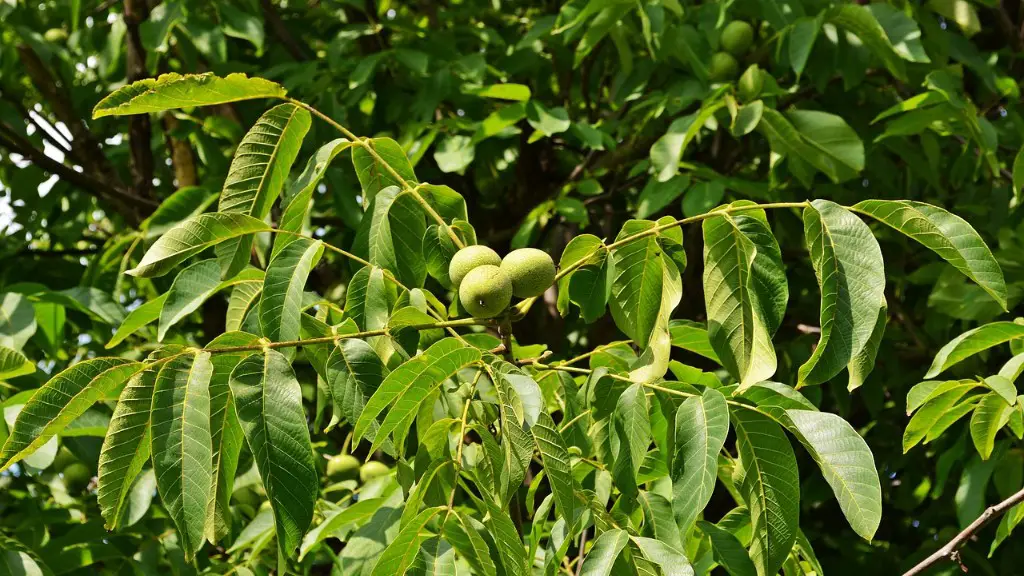How to Grow an Avocado Tree
Avocado trees have become increasingly popular as a houseplant and growing from the pit of a store-bought avocado. The process of growing your own tree from an avocado pit is a fun activity for adults and children alike. Growing an avocado tree from a seed can be very rewarding if done correctly, with a little patience, tending and care.
The key to success in growing an avocado tree is the ordering of the steps. Before you begin, the key is in ensuring the avocado pit is very dry. To start the process, you need to wash the pit and dry it with a paper towel. Once dry, it’s time to stack.
To get your avocado pit ready to grow, take three to four wooden or metal toothpicks and tightly wrap them around the circumference of the pit. Make sure the toothpicks are evenly spaced out. You’re now ready to suspend the pit in a glass of water.
Half fill a wide-mouth container or glass with room temperature water. Position the avocado pit suspended in the container over the water with the toothpicks so it is the only point of contact the pit makes with the container. Ensure the pit is half submerged in the water with the pointed end of the pit facing upwards.
Leave the avocado pit in the glass of water for about two weeks as it begins to germinate. It will start to show signs of life after about 6 – 10 days. Fresh water should be added to the container every few days to keep the water level constant and no dirt should be placed in the container as this may cause mould to form.
When the stem starts to sprout from the avocado pit, you can now transfer it to a pot. Fill the pot with a mixture of soil such as regular potting soil. You can also add some perlite or sand to make sure the soil itself is adequately draining.
Make sure the avocado pit sits firmly in the soil and water it thoroughly. Place the pot in a warm and sunny spot as avocados thrive in warmer and sunnier environments.
Fertilizing and Pruning the Avocado Tree
Avocado trees need to be fertilized twice a year, in the spring and the fall. A liquid fertilizer, diluted in water every two weeks, works best for avocado trees. When adding fertilizer to the tree, make sure to avoid getting fertilizer on the leaves as this can cause damage to the leaves.
Pruning and training your avocado tree is critical to the health of the tree and helps to keep the shape and size of the tree where you want it. Pruning should be done during the winter months when the tree isn’t actively growing. This helps the tree focus its energy on growing leaves and fruit in the summer.
When pruning, start at the top of the tree and work down. Make sure all branches are pointing outward in an outward fan-like shape and most of the pruning is done by cutting off twigs and dried up or sickly branches or branches that are growing too close to each other. Also prune out any suckers that shoot up from the base of the tree.
Watering and Maintaining The Tree
Watering is one of the most important aspects of caring for an avocado tree. A steady supply of moderately moist soil is essential for healthy growth, so avoid over and under watering. About once a week, check the soil with your finger to determine the moisture level in the pot. The soil should be slightly damp but not wet. If the soil is dry, water the tree so it reaches the base of the tree.
Have patience when growing an avocado tree as it can take up to four years to produce your first fruit. In addition, you may need to pollinate the flowers as they do not self pollinate. You can pollinate them yourself by gathering the pollen and brushing it onto the female flowers, or use an electric toothbrush to help distribute the pollen evenly.
Pest Control
Plants can be affected by pests and avocado trees are no different. Common avocado tree pests include aphids, mealybugs, scales and spider mites. The key to avoiding pest infestations is to be vigilant in checking for telltale signs. Check the plant for any parts of the plant that appear to discolor, these may indicate a pest infestation.
If an infestation is discovered, there are many effective methods to get rid of pests naturally. Using natural methods such as a hosepipe to blast away aphids, a citrus or vinegar spray solution or ladybugs. For more severe pest infestations, contact your local nursery or garden center for advice.
Harvesting the Fruit
It can take anywhere from four to seven years before the avocado tree produces fruit. It’s important to remember that the avocado harvested off the tree generally ripens after harvest, so wait until the fruit softens up before eating it. If you’re growing a variety of avocado, the fruit may look slightly different – blue or black skin, bumpy texture and so on, but this in no way affects their taste.
When it comes time to pick the fruit off the tree, always use a gentle hand. The stem should remain on the fruit and you should not pull the fruit off the tree as this can cause damage to the tree. Use a pair of scissors or a garden shears and gently cut the fruit off the tree. This will also help to prevent unintentional damage to the tree.
Protecting the Avocado Tree
Avocado trees thrive in warm temperatures and sunny spots but, like all plants, need to be protected from cold weather and frost. If temperatures are likely to drop below freezing, wrap the tree with a sheet of fabric or burlap in order to protect it from the cold.
During periods of favourable weather, protect the tree from the potentially harmful rays of the sun by providing some shade. Avocado trees don’t need much shade, only a couple of hours per day. You can also use a fabric or burlap or a light-colored cloth to provide an umbrella of shade.
Troubleshooting Avocado Trees
The most common problems that avocado trees run into are related to over-watering, not enough sunlight, and pests. If your avocado tree is not showing signs of growth, there are some measures you can take to troubleshoot the issue.
- Check the soil – is it too dry or too wet?
- Check for adequate drainage – is the potting mix allowing enough water to escape?
- Check for pests – are there any signs of an infestation?
- Check the amount of sun your tree is getting – is it getting enough?
- Check the amount of fertilizer you are adding – is it too much?
By identifying and rectifying any of these issues that may be impacting your avocado tree, it is likely to start showing signs of growth again – it may just need a few tweaks to get it back on track.



